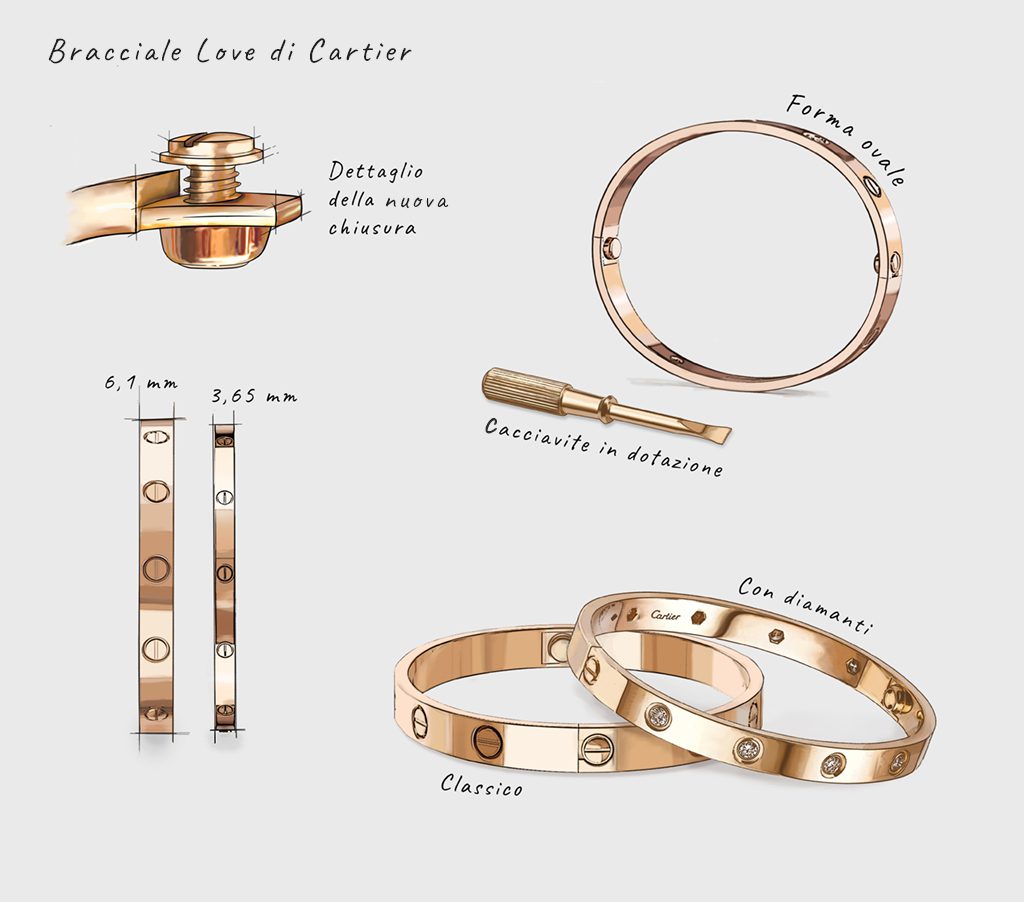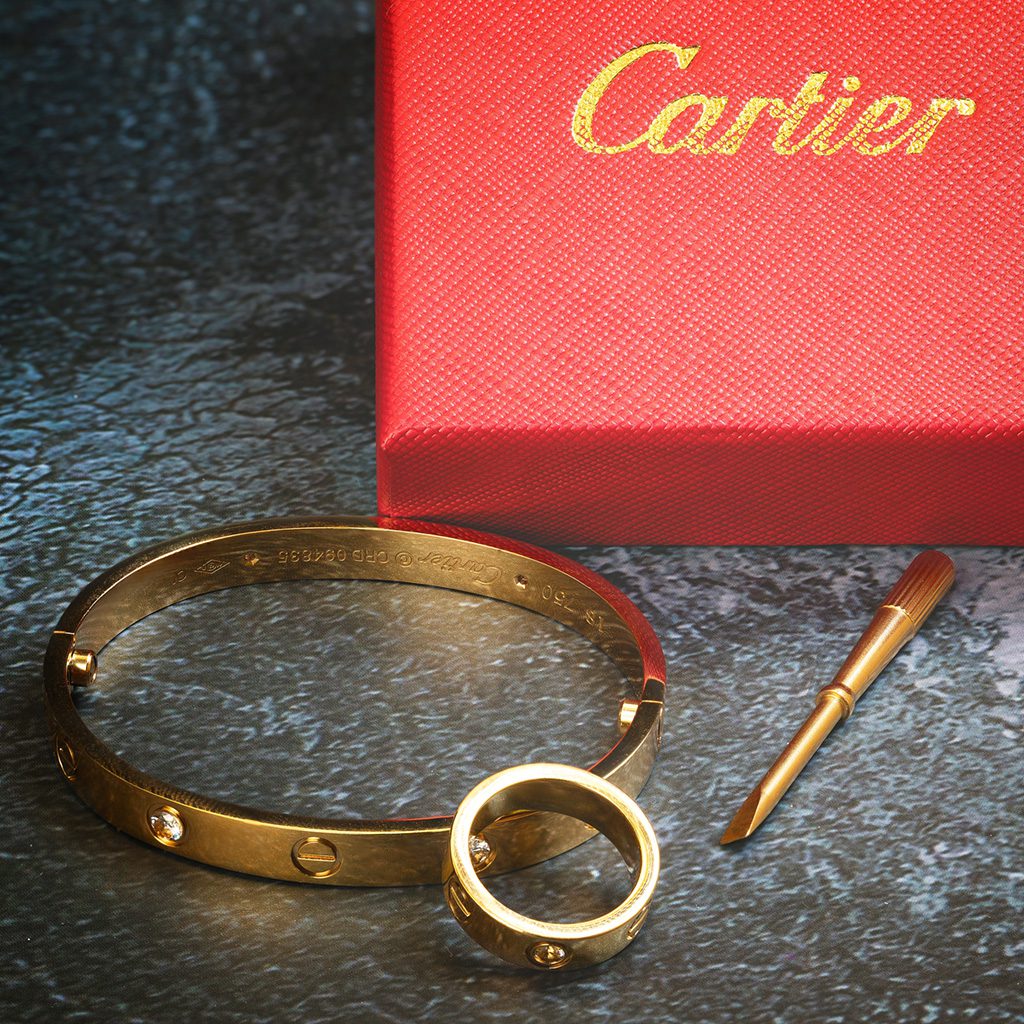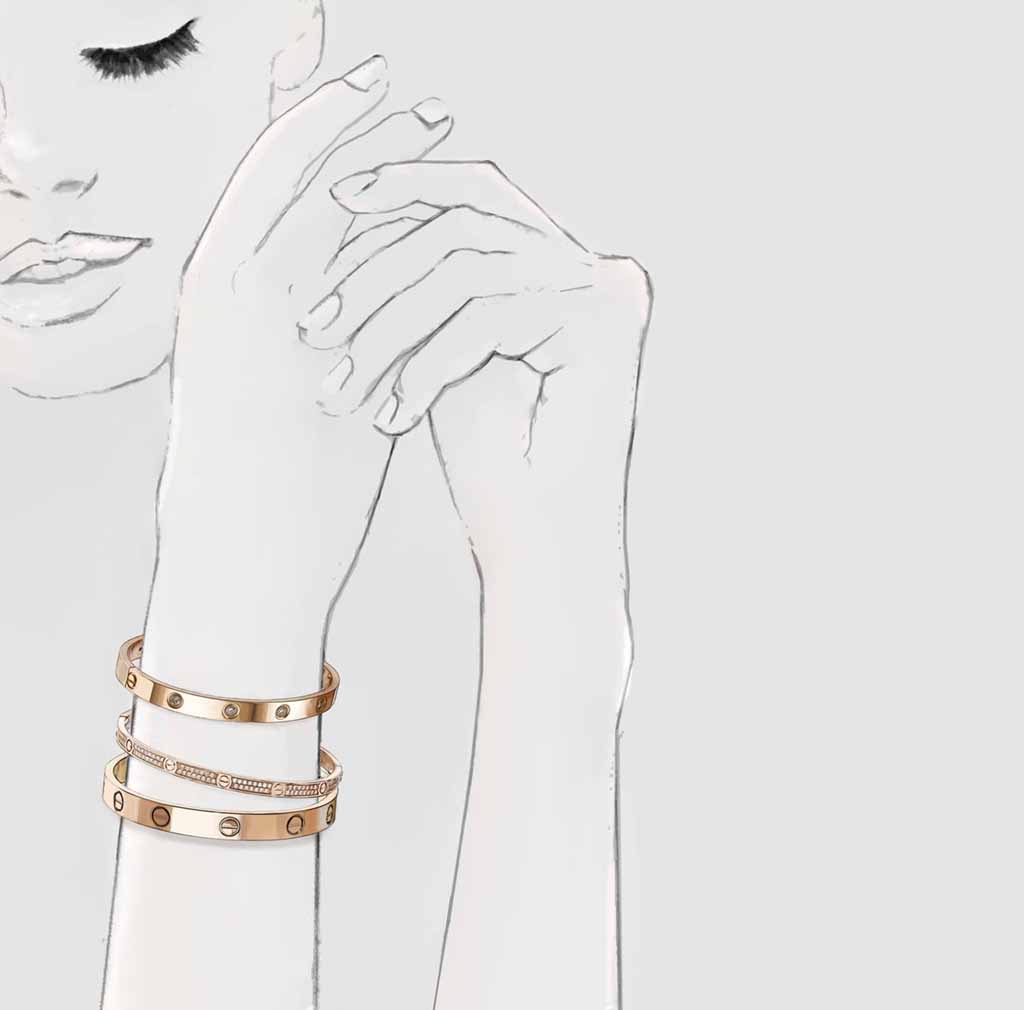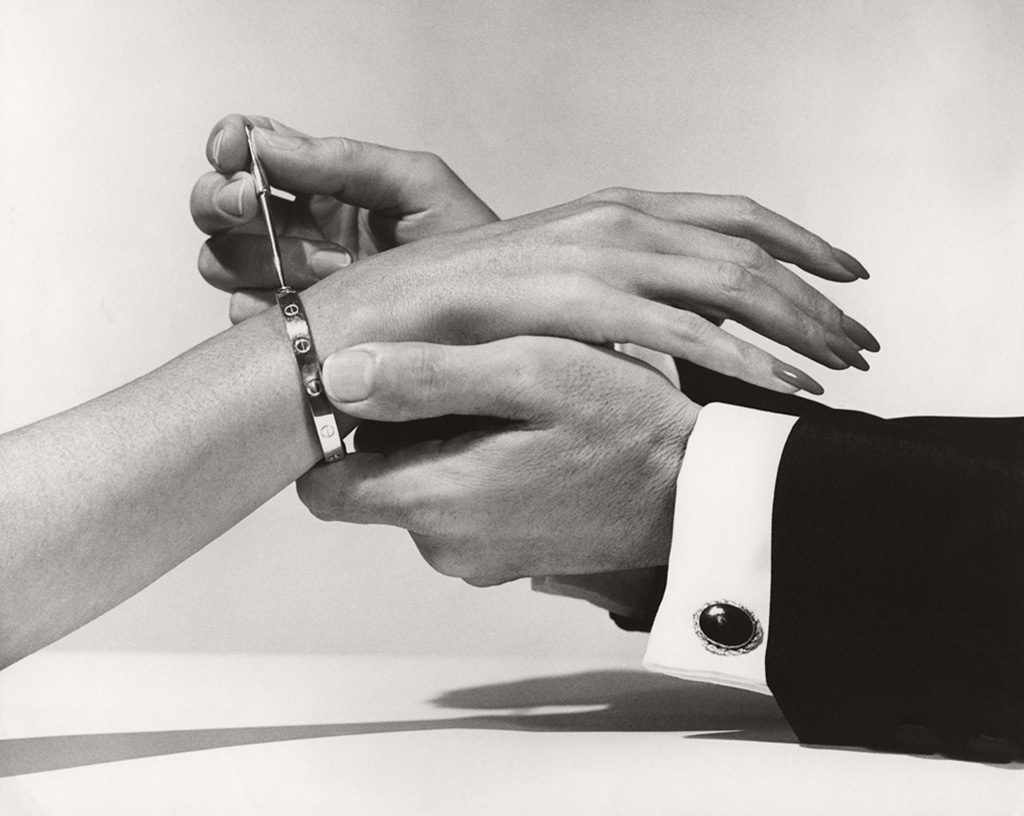For more than half a century, Cartier’s Love bracelet, an iconic symbol of timeless love, has been among the most desired and favourite jewels of celebrities. An exclusive cult object, a classic with instant recognition, the Love bracelet is still one of the most successful creations of the Cartier Fine Jewellery Maison.
Although it never went out of fashion, it has made a comeback in the last decade, climbing the ranks of the most sought-after jewels on the web.
This jewel with an extremely simple and accessible design, so much so that it can be considered a creation of our time, has a fascinating history behind it, made up of painful loves, lucky encounters and revolutionary intuitions.
Aldo Cipullo, the designer who revolutionised jewellery
Jewellery was the brainchild of a young Italian designer, Aldo Cipullo, whose resourcefulness, combined with his aesthetic sense and attraction for ‘the city that never sleeps’ and its hedonism, established him as New York’s most popular and glamorous designer of the 1970s and 1980s.
After moving to the United States in 1959, Cipullo attended the School of Visual Arts and soon began working as a designer, first with David Webb and then at Tiffany & Co. (together with creatives such as Donald Claflin), where he was able to develop his personal stylistic language, in which form and function were closely related.
A decisive encounter
Following the break with Tiffany & Co., which had occurred precisely because of the company’s refusal to produce the bracelet, which was considered not to be in line with its own values, Cipullo proposed his sketches to Michael Thomas, the new president of Cartier New York and a man with a far-sighted vision and inclined towards modernity. At the time, the company had already become independent from the Parisian Maison, and was looking for new expressive possibilities in the contemporary and addressing a new market, understanding the value ofurban style.
Thomas immediately realised the great potential of the bracelet, a perfect candidate to attract a younger clientele, a generation with completely new values and lifestyles, in line with modernity and the social and cultural changes taking place. He therefore decided to invest in the young designer, paving the way for a successful collaboration (Cipullo created other pieces of jewellery for Cartier, including the Juste un clou bracelet, in the shape of a twisted nail), which consecrated him as the undisputed protagonist of a radical change .
Significantly, in the same year in which Cartier made history by selling a diamond worth $1.1 million to Richard Burton for his beloved Elizabeth Taylor, the Love bracelet was also launched, whose value, at the time, did not exceed $250 (the first version was in gold-plated silver), about $1,800 today.
The winning choice ofinfluencer marketing
The bracelet was officially launched in 1969 and its success was immediate. The decision to promote the bracelet, giving it to 25 of the most famous and talked-about couples of the time, proved to be a winning strategy, a forerunner ofinfluencer marketing, exploding the public’s desire for it and giving rise to its popularity, so much so that it was considered on a par with an engagement ring as a pledge of love.
A pledge of love reinvented in a modern key
It is said that the idea was born on impulse, overnight, following a disappointment in love. Cipullo felt the need to preserve the memories that were all that remained to him, to create something that would remain forever, anchored physically in the body, but also intimately in the memory, indissolubly binding the loved one to himself (someone called it a ‘modern love handcuff’).
Behind its apparently functional and minimalist appearance one can therefore read something deeper and more symbolic. In order to express this feeling to be cherished, he thought of a way to manifest it materially, in an emotional and provocative way, and translate it into a ritual. Cipullo thus succeeded in recalibrating the perception of preciousness and reinventing the ancient token of love in a modern key.

Simple shape and a screwdriver to seal love
The original model consisted of two rigid, C-shaped arches(to remain as snug as possible on the wrist), which were fastened without being able to be slipped off independently. The real novelty was the closing mechanism: two small screws and a screwdriver, originally made of vermeil (925 sterling silver dipped in gold), which only the beloved, the keeper of the screwdriver provided, could close and open.
“What modern people want are symbols of love that look semi-permanent,” Cipullo declared in aninterview; “Or, at least, they require a trick to be removed.
A new perception of preciousness
From this romantic idea of absolute and eternal love arose, in fact, a democratic piece of jewellery, designed to be worn all the time, on all occasions, challenging the traditional notions of jewellery of the time, whereby jewellery was seen as something to be shown off on special occasions or combined with a specific outfit.
Moreover, with the advent of Love, Cartier was one of the forerunners of unisex jewellery, as the bracelet could only be sold, at least originally, in pairs, for her and for him, both carrying their respective screwdrivers.

The bracelet attracted not only desire and admiration, but also a counterfeit and imitation market, as a result of which Cartier decided to assign a serial number to certify its authenticity. The first versions also bore the signature of Aldo Cipullo.

From love icon to status symbol
In its more than 50 years of history, the bracelet has undergone a few changes (the clasp system is now more secure), and the collection has been enriched with other, more precious versions: in addition to the more classic yellow, white and pink gold versions, there are also those with pavé, valued at 68,000.00 (for the version in white gold and brilliant-cut diamonds).
Moreover, the bracelet, which has appeared in the lists of the best auction houses, including Christie’s and Bonhams, is still considered an investment: its popularity continues to grow and with it its value, consecrating it as a true status symbol, thanks also to that out-of-the-box spirit that has always distinguished it.
Alessandra Parisi
@Stiledesign. Reproduction reserved
You might also be interested in:










